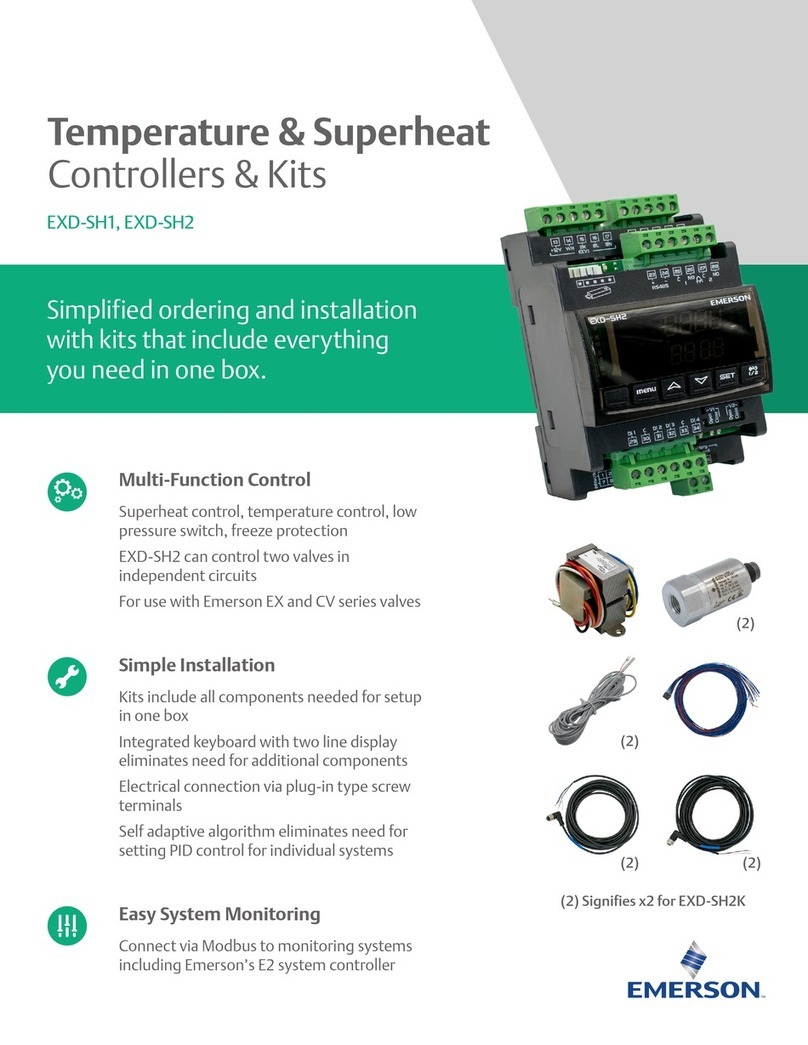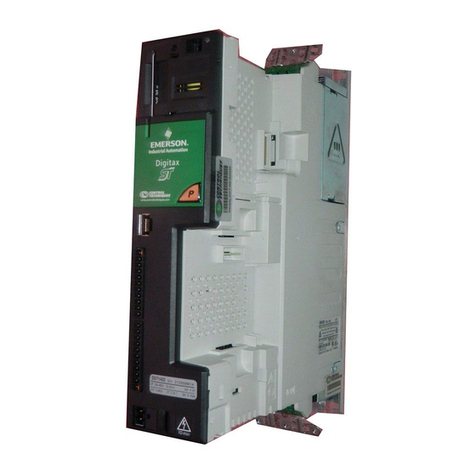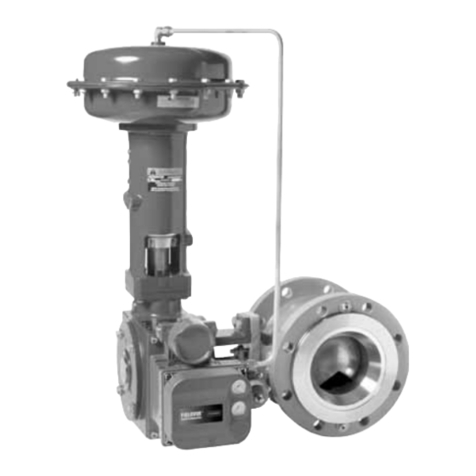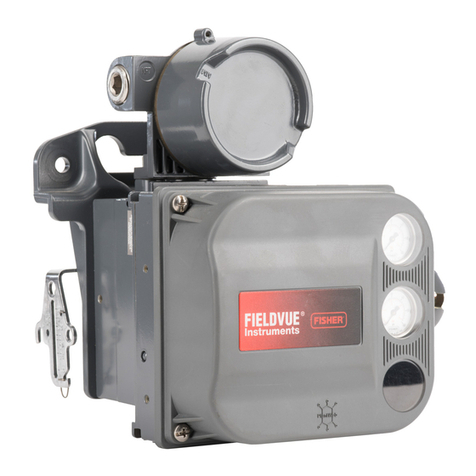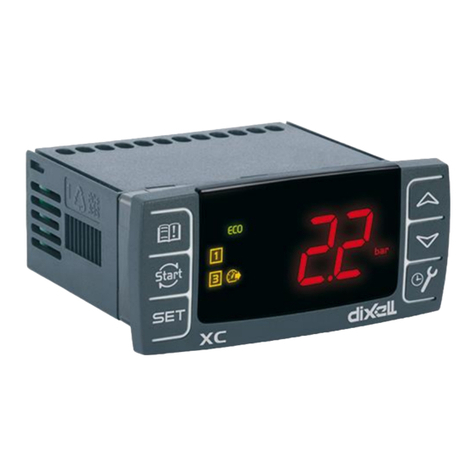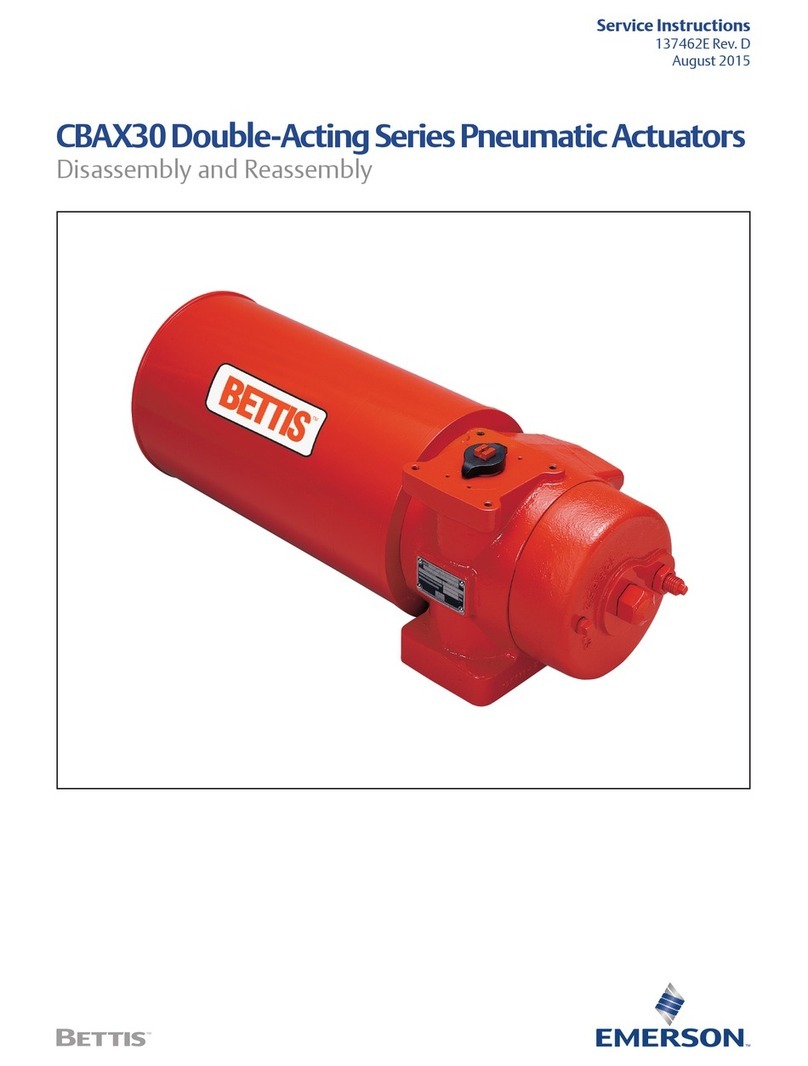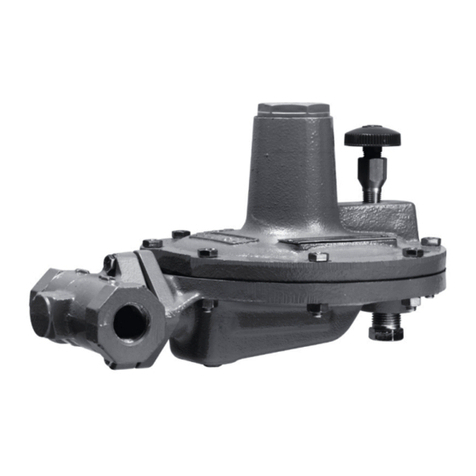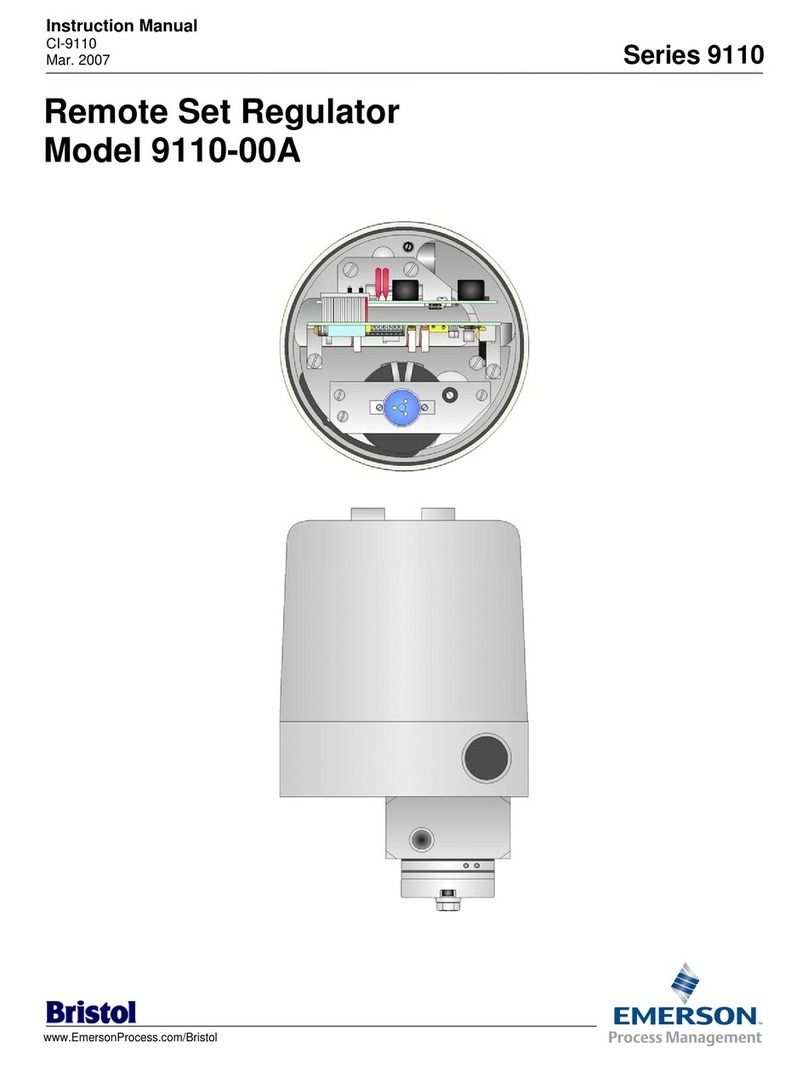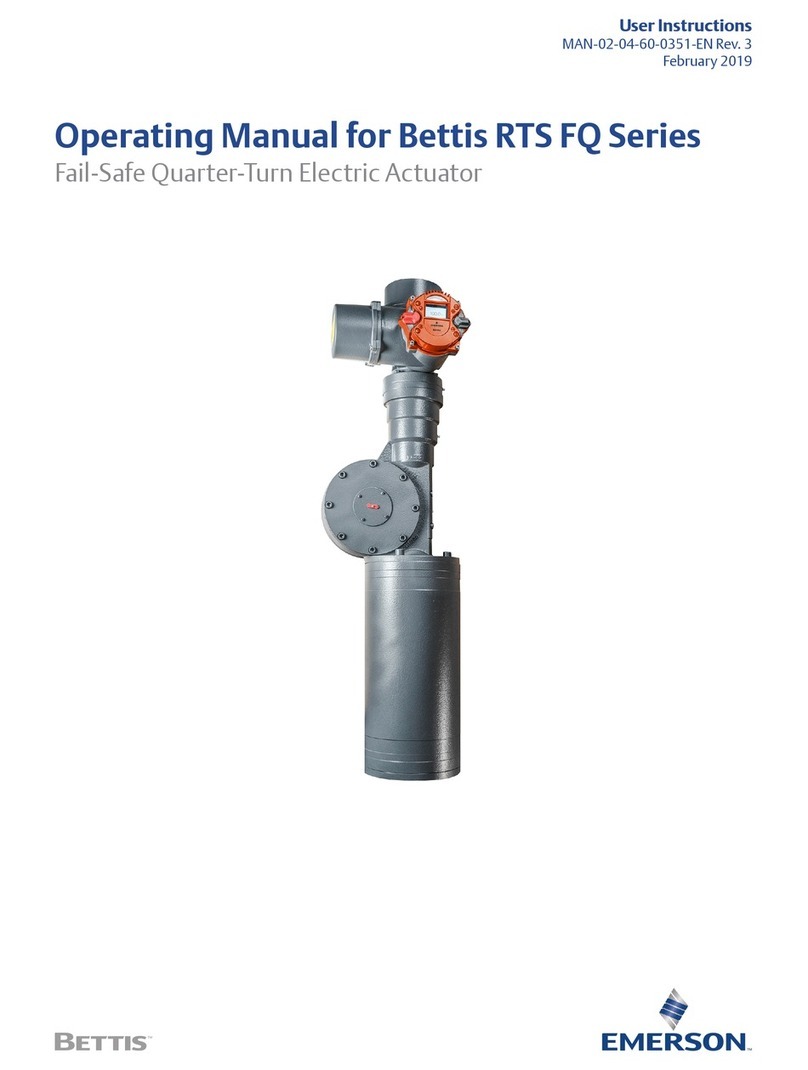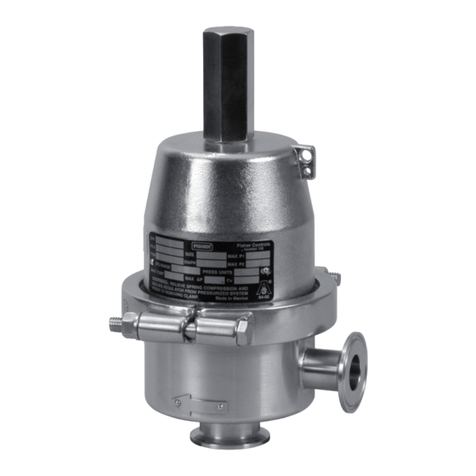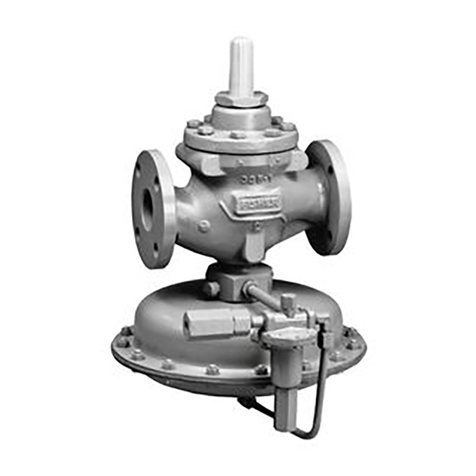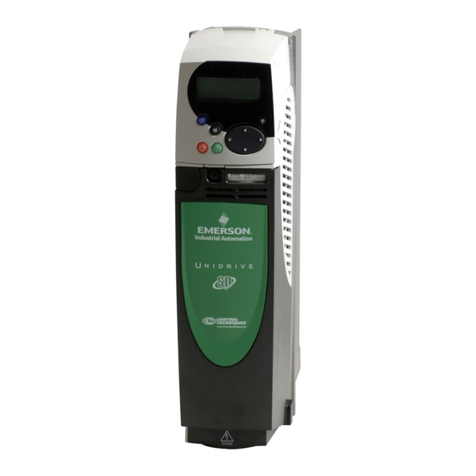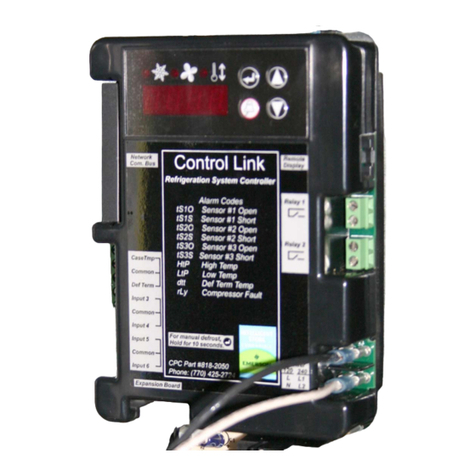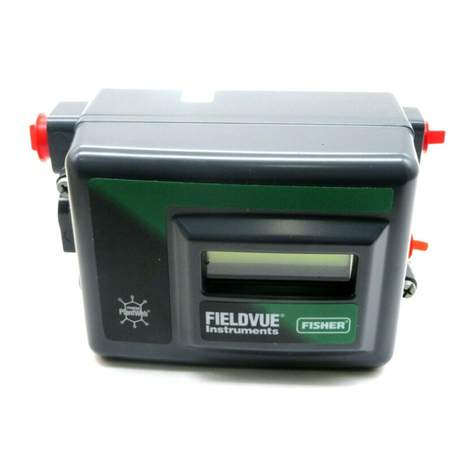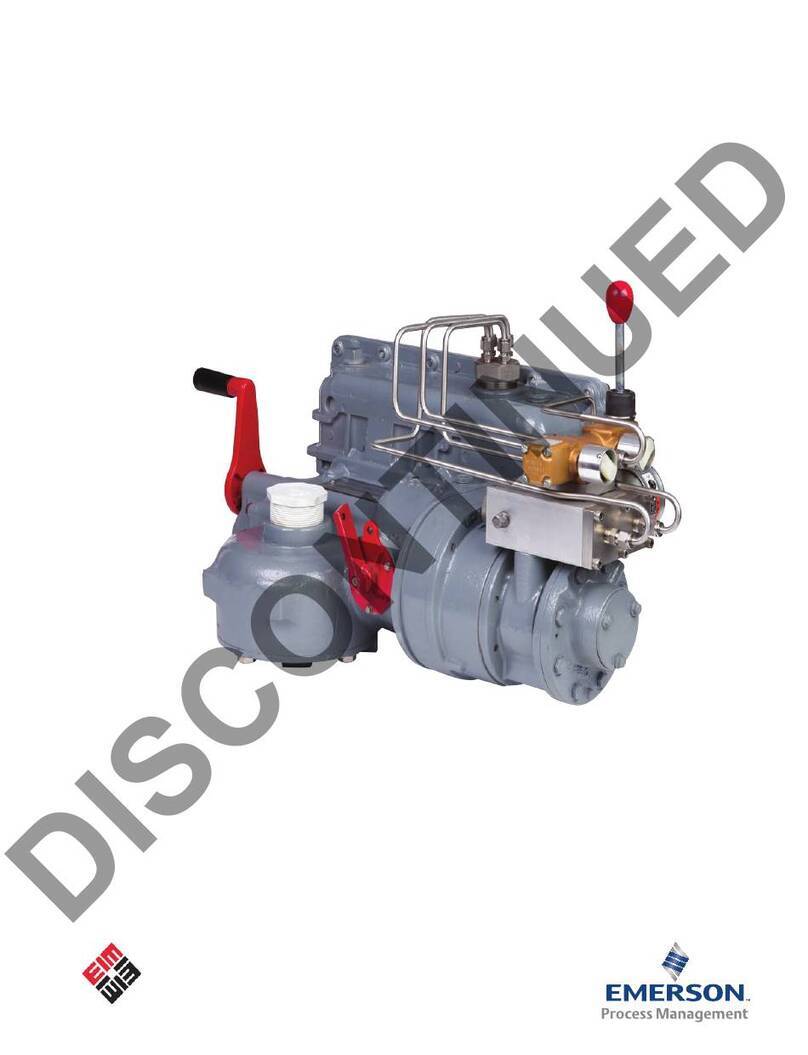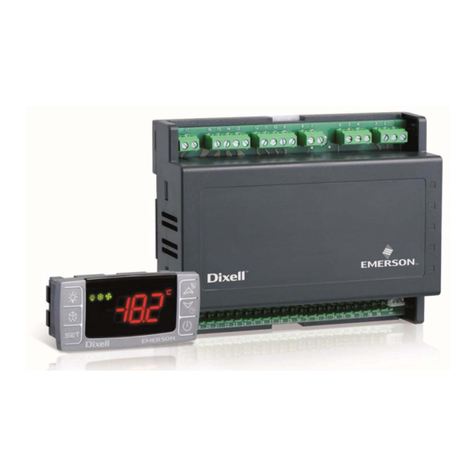
diaphragm lower casing (key 54), make sure the
ribs of the diaphragm head are aligned in between
the screws (key 16) and washers (key 17).
6. Lay the diaphragm (key 56) on the surface
of diaphragm head (key 36); make sure all
diaphragm holes are aligned with the pin (key 66)
and the bolt holes of diaphragm lower casing
(key 54) for the remainder of the assembly steps.
Note
Exercise care to ensure that the
diaphragm (key 56) is not pinched, twisted
or wrinkled while compressing between
the upper and lower diaphragm casings
(keys 59 and 54), diaphragm head and
diaphragm plate (keys 5 and 36).
7. Place the diaphragm plate (key 55) and lower
spring seat (key 37) on the diaphragm in turn and
tighten using two nuts (keys 34 and 60). Thin nut
(key 34) is below the nut (key 60). Make sure the
pin (key 66) is inserted into the hole of diaphragm
plate (key 55). Tighten securely, torque values
listed in Table 4.
Note
Hold the wrench at on top of stem
(key 14) while tightening the nuts
(keys 34 and 60). Make sure the
diaphragm does not move or become
pinched, twisted or wrinkled.
8. Insert upper spring seat (key 50) into the spring
(key 48) and apply lubricant into the hole of the
spring seat that contacts the adjusting screw
(key 53) and to both ends of the spring.
9. Place the spring (key 48) and upper spring seat
(key 50) onto the lower spring seat (key 37).
Note
Make sure the position of stem and
lower spring seat are at the center of
the spring.
10. Place the upper diaphragm casing (key 59) (along
with other attached components) over the spring
(key 48) and upper spring seat (key 50). Align
the bolt holes of the upper diaphragm casing and
lower diaphragm casing.
11. Apply lubricant to the thread of 8 bolts (key 58)
and insert the bolts down through the upper
diaphragm casing (key 59) then through the lower
diaphragm casing (key 54).
12. Place 8 washers (key 8) and 8 nuts (key 57)
onto the 8 bolts (key 58) from below the lower
diaphragm casing (key 54). Tighten the nuts
and bolts using a multi-pass, criss-cross pattern.
Torque values listed in Table 4.
Maintenance Instructions for Body
Replacement Parts (keys 2, 3, 7, 9, 10
and 11)
Refer to Figure 5 for maintenance instructions
for NPS 2 / DN 50 body. Refer to Figure 6 for
maintenance instructions for a NPS 3 and 4 / DN 80
and 100 body.
Body Disassembly
1. Isolate the Backpressure Regulator, relieve all
pressure in body and actuator and relieve spring
force by following the procedure described in the
Shutdown section.
2. Loosen and remove 8 bolts (key 13) and 8
washers (key 8 for NPS 2 / DN 50 and key 26 for
the NPS 3 and 4 / DN 80 and 100 body).
3. Carefully, remove the bonnet (key 12) (along with
all other attached components) upward and out of
the body (key 1).
Note
Some components may stick together
and seem to be connected. Be careful
not to allow these components to drop
or separate unexpectedly e.g. sleeve
(key 6), O-rings (keys 7, 10 and 11) and
sliding ring (key 9).
4. Slide apart sliding ring (key 6) from piston (key 4)
to access 2 sliding rings (key 9) and O-rings
(keys 7 and 10).
5. Remove cage (key 18), seat ring (key 3) and
O-ring (key 2).
6. Replace worn or damaged parts during assembly
by following the procedure described in the Body
Assembly section.
Body Assembly
1. Clean the surface and interior of the body (key 1)
by using penetrating oil, water removal spray,
and/or air gun. Lightly lubricate O-ring (key 2)
and place it on the corner of body/seat ring
(key 3) intersection.
7
Type CT88
